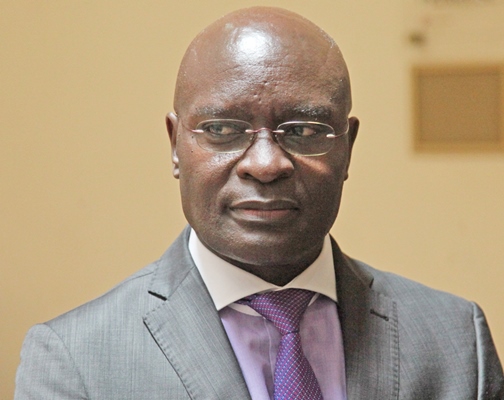Rapid urbanisation has made public safety a top priority of city governance. Governments worldwide recognize that urban safety plays a vital role in protecting people’s lives and property, and is the cornerstone of economic growth in modern cities.
To make cities smarter and safer, they are adopting innovative information and communications technologies (ICT) designed to prevent and react to evolving threats.
Safety risks can be effectively addressed by leading new ICT, particularly Wireless Broadband, Cloud Computing, and Big Data.
Comprehensive Situational Awareness, Intelligent Protection
Video surveillance systems are essential to enable Safe Cities by providing live and recorded videos at key locations. Safety agencies can analyze the videos to predict potential risks, and take appropriate measures to prevent incidents before they occur. When an incident happens, safety agencies can access and watch recorded videos to find valuable insights for handling the incident quickly and safely.
Video is a collection of people, vehicles, and environments based on image sensing technologies. However, video collection alone can no longer adapt to increasingly complex environments. Government agencies need a holistic Safe City system that capitalizes on a variety of sensors and smart technologies to facilitate comprehensive situational awareness and intelligent protection via the Internet of Things (IoT).
A holistic Safe City system covers a wide range of areas including residential communities, banks, postal offices, roads, and vehicles. At key locations, such as airports and metro stations, the Safe City system can adopt state-of-the-art IoT technologies to perform data collection, wireless communications, and tracking and analysis, achieving comprehensive security protection.
Large-Scale Video Networking and Sharing
According to IMS Research, more than 56 million cameras were shipped in 2014 alone, generating over 1,600 PB videos on a daily basis. Government agencies are facing significant challenges in managing and using this immense amount of data, such as:
v Sharing and searching vast amounts of data in traditional ways is time-consuming, inefficient, and challenging across agencies and regions.
v Video reliability is compromised by non-professional storage methods. Valuable videos may be lost or corrupted, negatively influencing case clearance efficiency.
Siloed video storage system architecture hinders video usage efficiency and reliability, and needs rethinking. One effective solution is video cloud architecture, which uses cloud storage technologies to enable large-scale video networking and sharing.
Wireless Broadband Trunking: Prompt and Accurate Emergency Response
Effective cross-agency resource scheduling and unified command are critical for prompt and accurate emergency response. To achieve this, government agencies urgently need a unified wireless communications platform that converges video, voice, and data services for unified dispatching, accurate decision-making, and efficient command.
Today, narrowband digital trunking is evolving to broadband multimedia trunking with a focus on 4G Long-Term Evolution (LTE). LTE broadband trunking delivers a downstream bandwidth of 100 Mbit/s and an upstream bandwidth of 50 Mbit/s to achieve real-time video transmission.
Its latency and security also comply with professional standards and adapt to industry-specific scenarios. When a public safety incident occurs, a broadband trunking system allows first responders to receive videos from, send on-site videos back to, and join a video conference with the command center, drastically improving emergency response accuracy and efficiency.
Converged Command Center: Efficient Emergency Response
A command center functions as the central system that coordinates police, fire, and medical departments for unified actions. A traditional command center is challenged in the following ways:
* Lack of on-site videos impedes decision-making accuracy of the command center.
* Different agencies have different communication systems making cross-agency information sharing and service collaboration challenging.
To address these challenges, a future-ready command center must integrate diverse systems to achieve service interoperability and information sharing:
* By interoperating with on-site video collection, broadband trunking, and conferencing systems, the command center implements real-time video sharing and stays informed of on-site conditions.
* The interoperability of cross-system terminals facilitates unified voice and video conferencing across agencies, enhancing collaboration and decision-making efficiency.
* A converged command center will broadly use voice, video, and data services for accurate, efficient decision-making.
Big Data Analytics: Scientific Command, Rapid Response
With the continuous development of Safe City systems, government agencies are concerned about how to use and manage a growing number of devices, data, and application resources. Big Data technology opens up new possibilities for efficient data searches, analysis, storage, and usage. The technology helps police officers analyze behaviors, movements, and social relationships of suspects, and identify their biological features. By doing so, police officers can make effective decisions in scheduling police forces and rapidly responding to emergencies.
As cities continue to develop, government agencies are under pressure to ensure public safety. The priority of Safe City development is shifting from site deployment to intelligent management. Innovative ICT is helping government agencies to strengthen safety management capabilities and make cities safer.
These Safe City Solutions have been widely deployed across the globe by Huawei a leading global ICT solutions provider. For example, Huawei helped Kenya improve public safety by establishing safe city systems consisting of a Computer-Aided Dispatch (CAD) system, broadband trunkingeLTE, video surveillance, and intelligent analysis (license plate recognition and traffic violation detection).
According to Kenya’s annual police report, the crime rate in the regions covered by the system declined by 46 percent in 2015 compared to the previous year. In particular, the solution played a vital role in ensuring the safety of Pope Francis during his visit to Kenya on November 26, 2015.
Huawei has successfully implemented solutions worldwide to help build greater levels of Public Safety for more than 100 cities in more than 30 countries serving more than four hundred million citizens.
The writer Rose Moyo, the Director of Enterprise Wireless Solutions of Huawei in East and Southern Africa.








